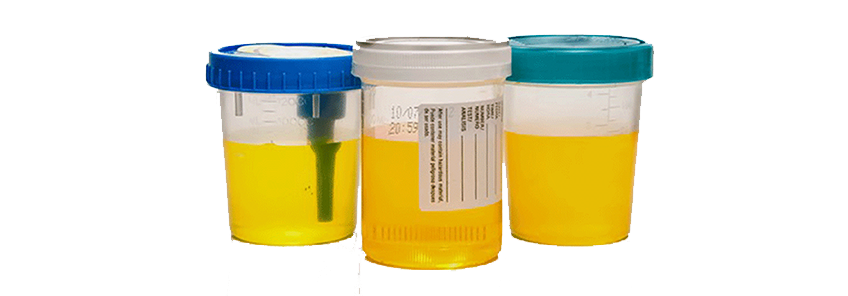Change in Urine Color

The colour of urine normally ranges from pale yellow to brownish yellow depending upon the amount of a pigment known as urochrome in the urine or the concentration of urine itself. The darker the colour of urine, the more concentrated it is. The urine is normally more concentrated after an overnight sleep. Certain food and medications change urine color. Sometimes change in urine colour may represent serious underlying disease.
Causes
Some of the commonly seen abnormal urine colour and their causes are:
Red or pink urine:
- Blood in urine resulting from urinary tract infection, tumors, kidney stones, etc.
- Eating foods like blueberries, beets, etc.
- Breakdown of red cells.
Cloudy urine:
- Urine tract infection.
- Kidney stones.
Orange coloured urine:
- Side effect of some medications like Rifampicin (in the anti-TB therapy), chemotherapeutic agents, sulfasalazine, vitamin B, vitamin C, etc.
- Disease of bile duct or liver.
- Dehydration.
Blue or green:
- Food dyes from brightly coloured foods.
- Dyes used in diagnostic tests for kidney and bladder.
- Medications like amitriptyline, propofol, multivitamins, etc.
Dark brown urine:
- Intake of some foods like fava beans, etc.
- Muscle injury due to overexertion, certain liver and kidney problems, etc.
- Medications like metronidazole, chloroquine, etc.
Symptoms
There may be no symptoms other than change in urine color or there could be symptoms due to an underlying disease:
- Burning urination.
- Fouls smelling urine.
- Frequent urination.
- Fever.
- Body ache.
- Pain in sides of abdomen or lower back.
When to seek medical care?
Change in urine is associated with other symptoms, such as:
- Urinary frequency, burning, foul smell.
- Fever.
- Severe pain.
- Nausea, vomiting.
- Yellow eyes or skin.
Diagnosis
The doctor will take a detailed history, conduct a physical examination and order lab tests, if needed.
- Urinalysis: to look for blood cells, protein and signs of infection.
- Blood tests: to check function of kidney, liver
- Imaging such as ultrasound of bladder and kidneys
Treatment
Most of the time, change in urine colour is harmless and does not need medical treatment. Adequate fluid intake and change in diet is helpful. When change in color is due to an underlying disease, treatment of the cause is needed.
Prevention
You can prevent the change in urine colour to some extent by drinking plenty of fluid and preventing dehydration and by avoiding certain foods that change the colour of urine. Take specific precautions to prevent urinary infection, kidney or liver diseases.



Send us your feedback on this article